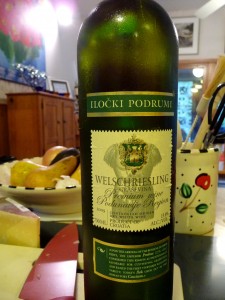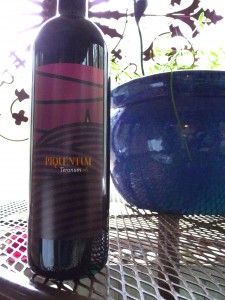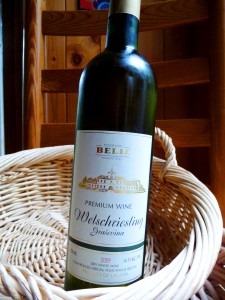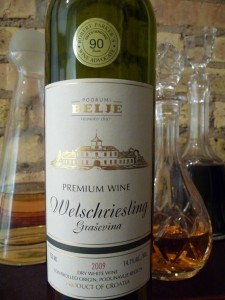Neither Welsh Nor Riesling, Part 2: Spring Green
 In honor of spring, we feasted on a wonderfully green, satisfying meal of pearl barley risotto with zucchini, mushrooms and fresh basil and a side of roasted asparagus and ramps. To match, I searched for the greenest thing in my wine collection, which turned out to be a 2009 Iločki Podrumi Welschriesling.
In honor of spring, we feasted on a wonderfully green, satisfying meal of pearl barley risotto with zucchini, mushrooms and fresh basil and a side of roasted asparagus and ramps. To match, I searched for the greenest thing in my wine collection, which turned out to be a 2009 Iločki Podrumi Welschriesling.
The Iločki Podrumi winery lies on the right bank of the Danube near Ilok, the easternmost town of Croatia. Romans manning the local fortress likely maintained vineyards here, and wine certainly factored into the economy by the time the 15th-century “Old Cellar” was built. Capable of aging up to a million liters of wine, the Old Cellar reached the pinnacle of its fame when it supplied approximately 11,000 bottles of wine to the coronation celebrations of Elizabeth II.
(According to Decanter, William and Kate served Pol Roger Champagne at their reception, as I’m sure you’re all deeply curious to know.) (more…)








